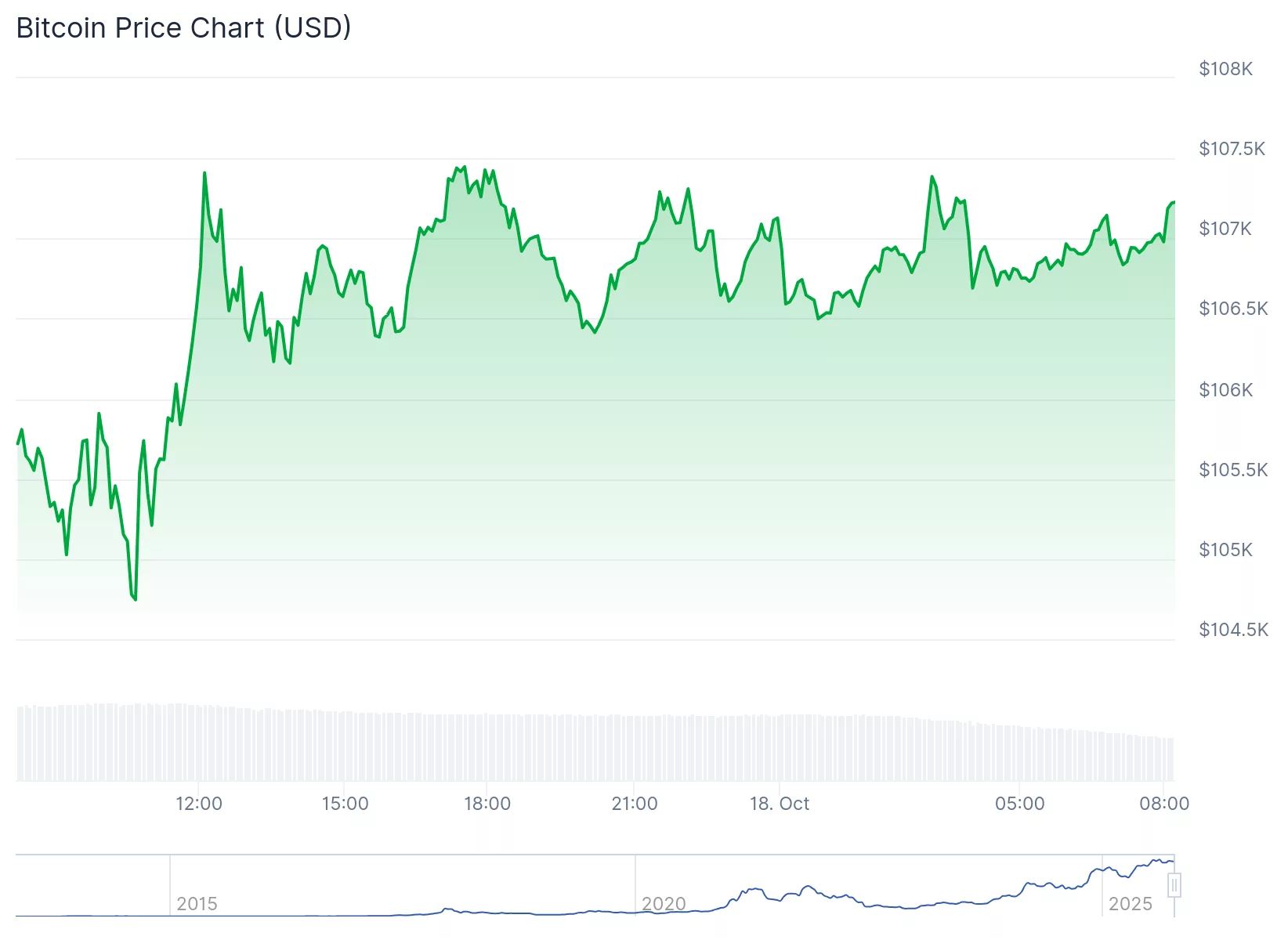Bitcoin remained steady above $107,200 as of Saturday, recovering from its weekly low of $103,660.
This surge positively impacted several prominent cryptocurrencies — including Dash, Morpho, Bittensor, and Aster — all experiencing gains of over 8% in the last 24 hours.
Summary
- The recovery in digital assets comes as investors look to “buy the dip” after a widespread crypto selloff earlier this month, amid rising optimism for improved U.S.-China relations.
- Markets are closely monitoring the upcoming meeting between Trump and President Xi at the APEC summit, with Treasury Secretary Scott Bessent expected to meet his counterpart Le Lifeng next week in Malaysia.
- Any indication of reduced tensions could alleviate inflation worries and support the Federal Reserve’s path toward rate cuts — a scenario viewed as favorable for both equities and cryptocurrencies.
Bitcoin and ‘buy the dip’ mindset
A likely factor behind the uptick in Bitcoin’s price is that investors are seizing the opportunity to buy the dip after most tokens fell into a bear market, dropping over 20% from their peak this month.

The crypto market is also rebounding, buoyed by hopes of a de-escalation in tensions between the U.S. and China, ahead of President Trump’s meeting with President Xi Jinping at the APEC summit in South Korea later this month.
Treasury Secretary Scott Bessent, after having critical discussions with Li Chenggang, China’s top trade negotiator, confirmed speaking with He Lifeng, his Chinese counterpart in Malaysia on Friday, and plans to meet in person next week.
Trade relations between both nations have become increasingly strained. As of last month, the average tariffs imposed by China on U.S. exports are over 32%, applying to all goods.
China has also announced intentions to implement controls on exports of rare earth materials and magnets, actions that could significantly affect U.S. manufacturing given its dominance in the market.
China recently ceased importing U.S. soybeans, encouraged domestic companies to avoid Nvidia chips, and initiated an investigation into Qualcomm. Meanwhile, Trump is threatening to impose tariffs starting at 130% on Chinese exports by November 1, an increase from the current minimum of 30%.
A potential agreement between the two nations would likely be beneficial for both stock and crypto markets, as it would help ease recent tensions.
Moreover, a deal could mitigate inflation risks and ensure that the Federal Reserve persists in its interest rate cuts.
Is the crypto rally a temporary bounce?
According to Bloomberg, Chinese officials indicated to global counterparts that recent rare earth measures were responses to U.S. provocations.
They highlighted U.S. attempts to expand sanctions to include subsidiaries of blacklisted firms.
However, there is also the concern that the current rally in the crypto market may be a dead-cat bounce (DCB), where an asset rebounds temporarily from a significant drop before resuming its downward trend.
An illustrative example of a DCB occurred last week when Bitcoin and other altcoins bounced back following Friday’s crash, only to continue their downtrend afterward.

